What is product design? How to create user-centric products
Explore the key principles of product design, from user needs to crafting solutions that drive value. Learn how design impacts the success of any product.
Explore the key principles of product design, from user needs to crafting solutions that drive value. Learn how design impacts the success of any product.




Table of Contents
Title
Title
Title
In today’s fast-paced, competitive world, the success of any digital product is closely tied to one key element: design. It's one of the first thing people notice, and in an age where both physical and digital products are constantly vying for attention, great design is increasingly becoming a crucial differentiating factor for companies. Whether you're talking about a new app, a website, or something you’d find on a retail shelf, design is the ultimate game-changer. But what is product design exactly? Traditionally, the term “product” referred to physical items you’d see in stores. Now, it encompasses digital experiences too. From the app on your phone to the website you browse daily, these are all modern products, and their success depends heavily on design.
At its core, product design is the process of blending user needs with business goals, creating solutions that don’t just look good, but work well for the people who use them. It’s about more than just aesthetics—it’s about making sure the product delivers the right experience for the right people. And that means understanding your audience, researching their problems, and crafting something that solves those issues in a meaningful way.
In this article, we’ll dive into what product design truly involves and why it’s the most important feature of any successful product.
So, what exactly is product design?
The product design definition refers to the process of imagining, creating, and refining products that address real user problems or fulfill specific market needs. It’s not just about making things look good; it’s about ensuring that the product works well, meets user expectations, and delivers a seamless experience.
Fundamentally, the meaning of product design revolves around understanding the end user—who they are, what they need, and how they interact with the product. Product designers focus on solving real-world issues by combining empathy with a deep knowledge of customer behavior, habits, and frustrations. The ultimate aim is to create solutions that feel intuitive, so natural that users don’t even have to think about them.
As we will see in this article, the product design process involves identifying opportunities in the market, clearly defining the problem, crafting a solution, and validating that solution with real users. And it doesn’t stop at launch—good design practices extend throughout the product’s entire lifecycle, ensuring that new features and improvements are integrated smoothly and consistently.
But product design isn’t just what users see. It also includes behind-the-scenes elements like system and process design, which ensure that everything functions smoothly, supporting the overall user experience.
From handcrafted goods to digital products: the evolution of product design
Did you know product design has its roots in something much older—industrial design? Back in the day, before the rise of mass production, craftspeople created products by hand, which meant they were fewer in number and more expensive. But when the industrial era kicked off, companies could mass-produce items at lower costs. That’s when industrial designers came in, making these products not only functional but also stylish enough to attract a growing market of consumers.
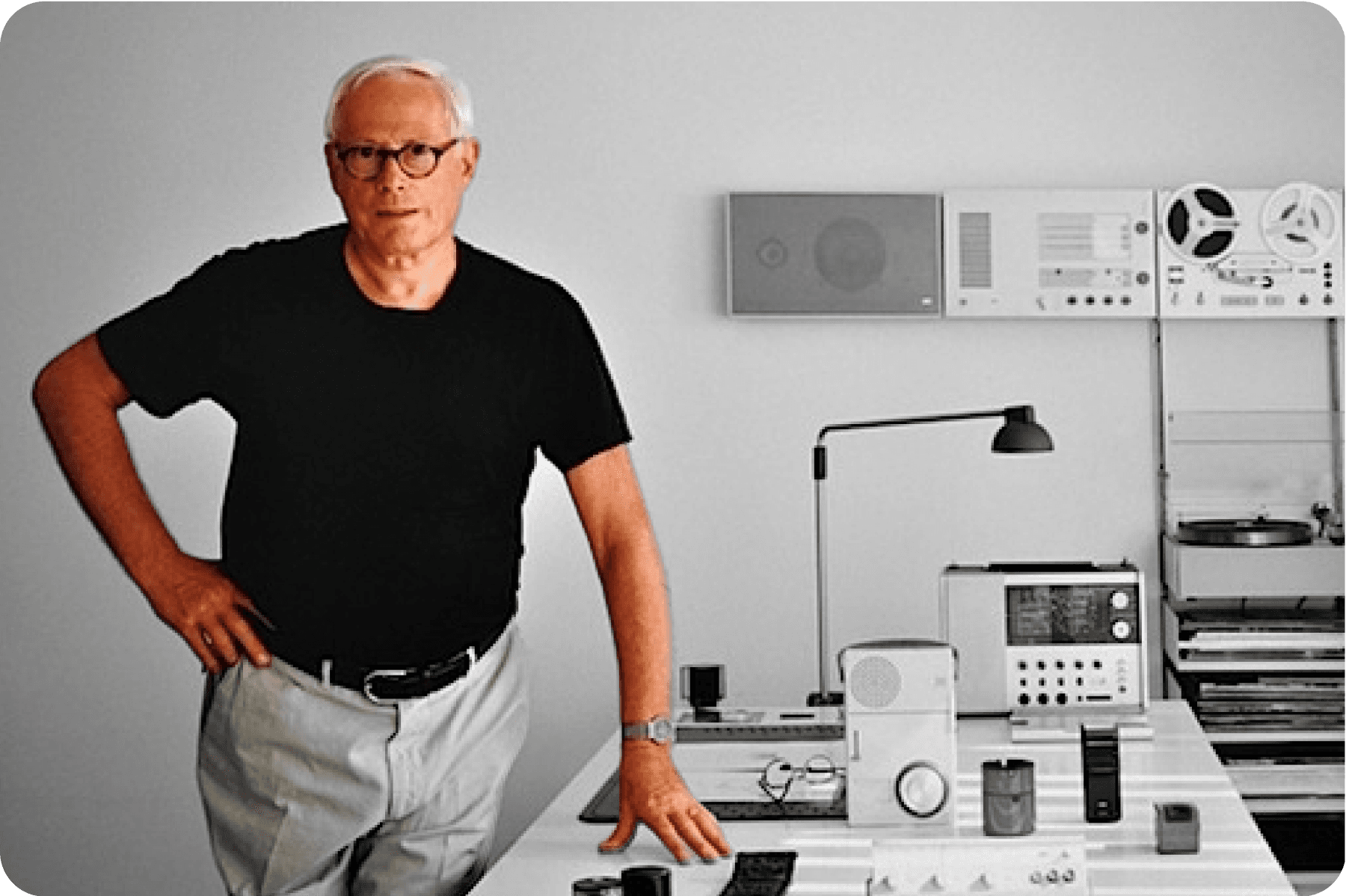
Originally, industrial design was all about creating physical products like furniture or appliances. But as technology advanced, a new branch of design emerged: product design. Unlike its industrial counterpart, product design applies to everything, from physical items to digital ones, like the apps on your phone.
So, what’s the difference? While industrial design still focuses on tangible goods, product design has expanded into the digital space, shaping how we experience software, apps, and more. This evolution highlights how design adapts to meet the changing needs of the world—whether it's something you hold in your hand or interact with on a screen!
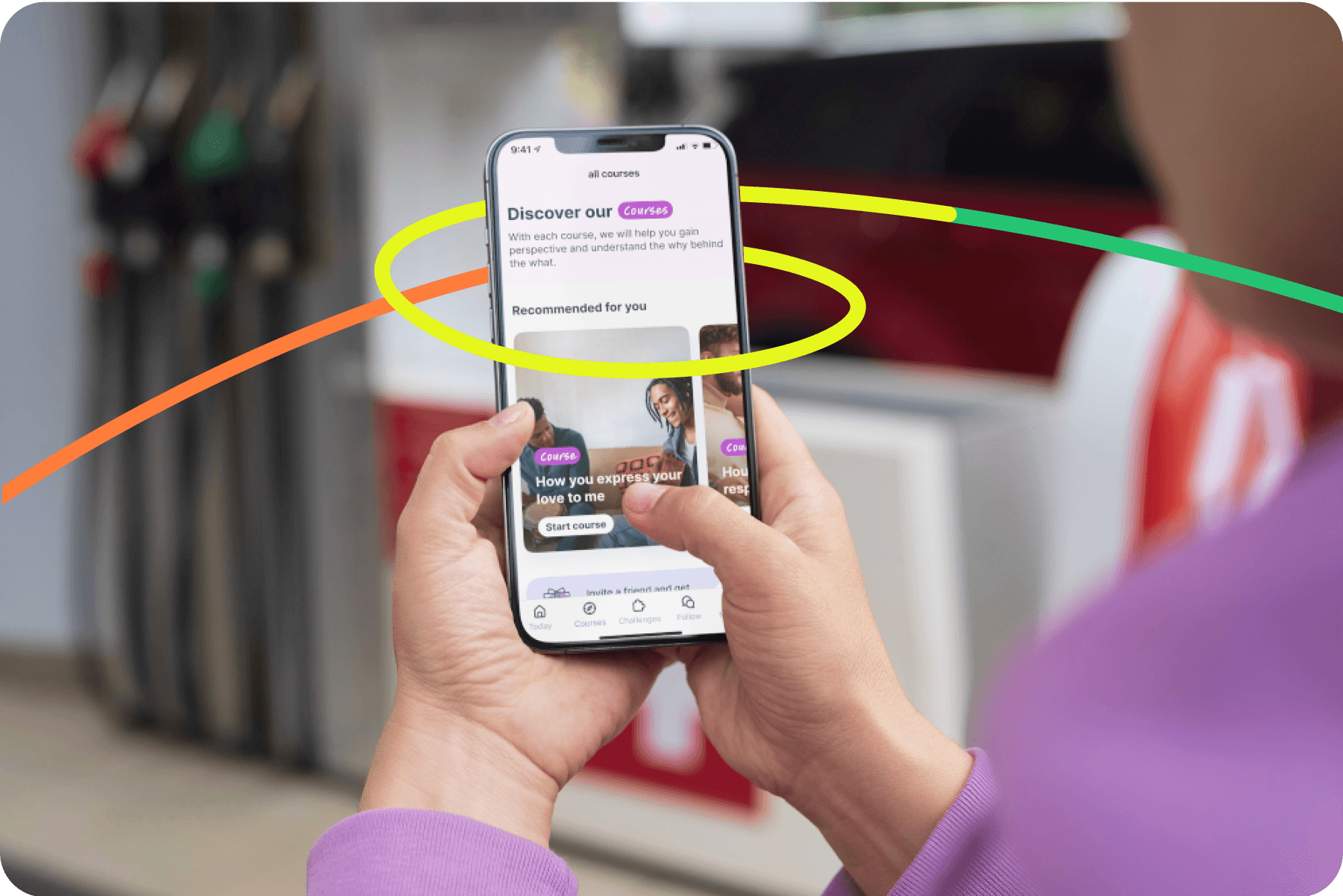
The never-ending cycle of product design: think, create, test, repeat!
When asking 'what is product design,' it’s important to understand that it’s not a one-and-done process—it’s a dynamic, evolving journey that follows a flexible framework known as design thinking. The steps may vary slightly between companies, but the core philosophy remains the same. It typically begins with empathy and understanding the needs of the users. From there, designers define the problem, brainstorm solutions, build prototypes, and test them with real users.
But don’t be fooled by the neat order of these steps—they’re not always followed in a straight line. Often, testing a prototype reveals new insights, sending the team back to redefine the problem or rethink their solution. In fact, the product design process never truly stops. As user behaviors change—like the shift toward mobile usage—designers must continually adapt, ensuring their products stay relevant and user-friendly.
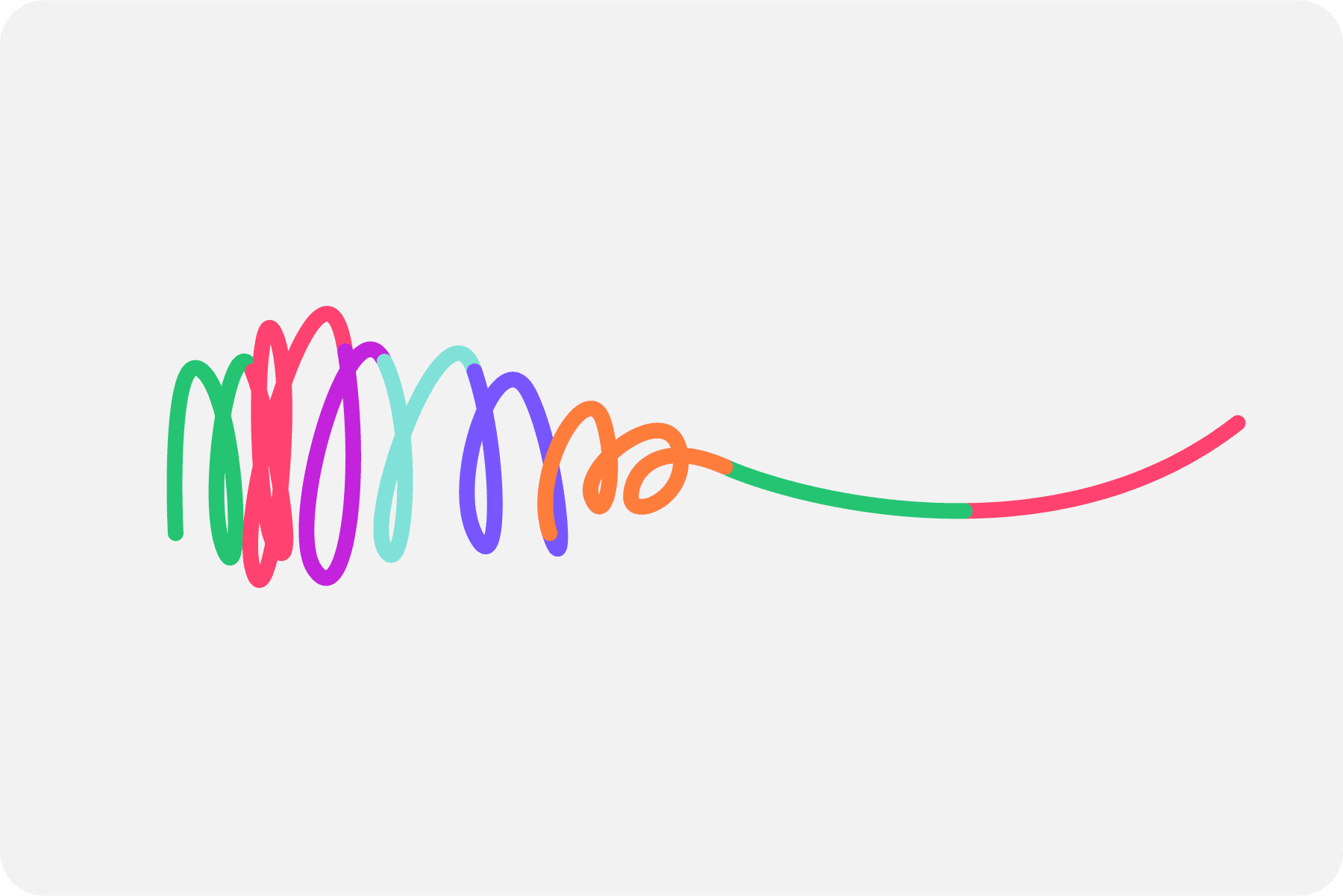
Before diving into solutions, though, designers need to ask the right questions: what problem are we solving? Who has this problem? What do we want to achieve? By answering these questions, product designers can shape the user experience from a holistic perspective, ensuring the product not only looks good but also solves real problems for real people.
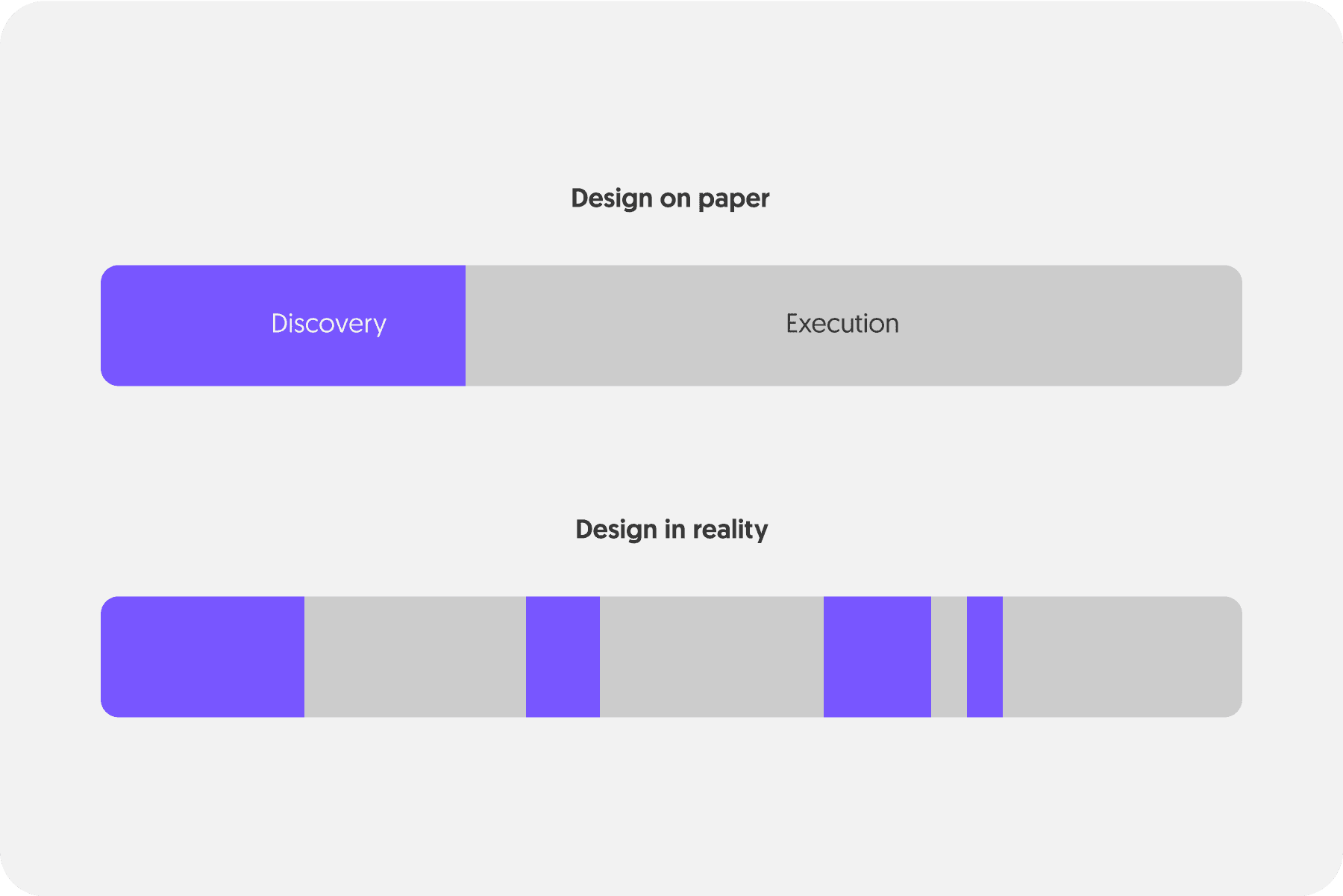
Credits: Dan Brown, “Practical Design Discovery”
How does the product design process work? Understanding what product design truly is about
When it comes to designing products, there’s no one-size-fits-all approach, but most teams follow a general framework to guide the process.
There are a lot of processes out there, IDEO Design Thinking, Double Diamond, Google Design Sprints, but they tipically include a series of steps that starts long before sketching ideas and building prototypes. It typically follows a flow that looks something like this:
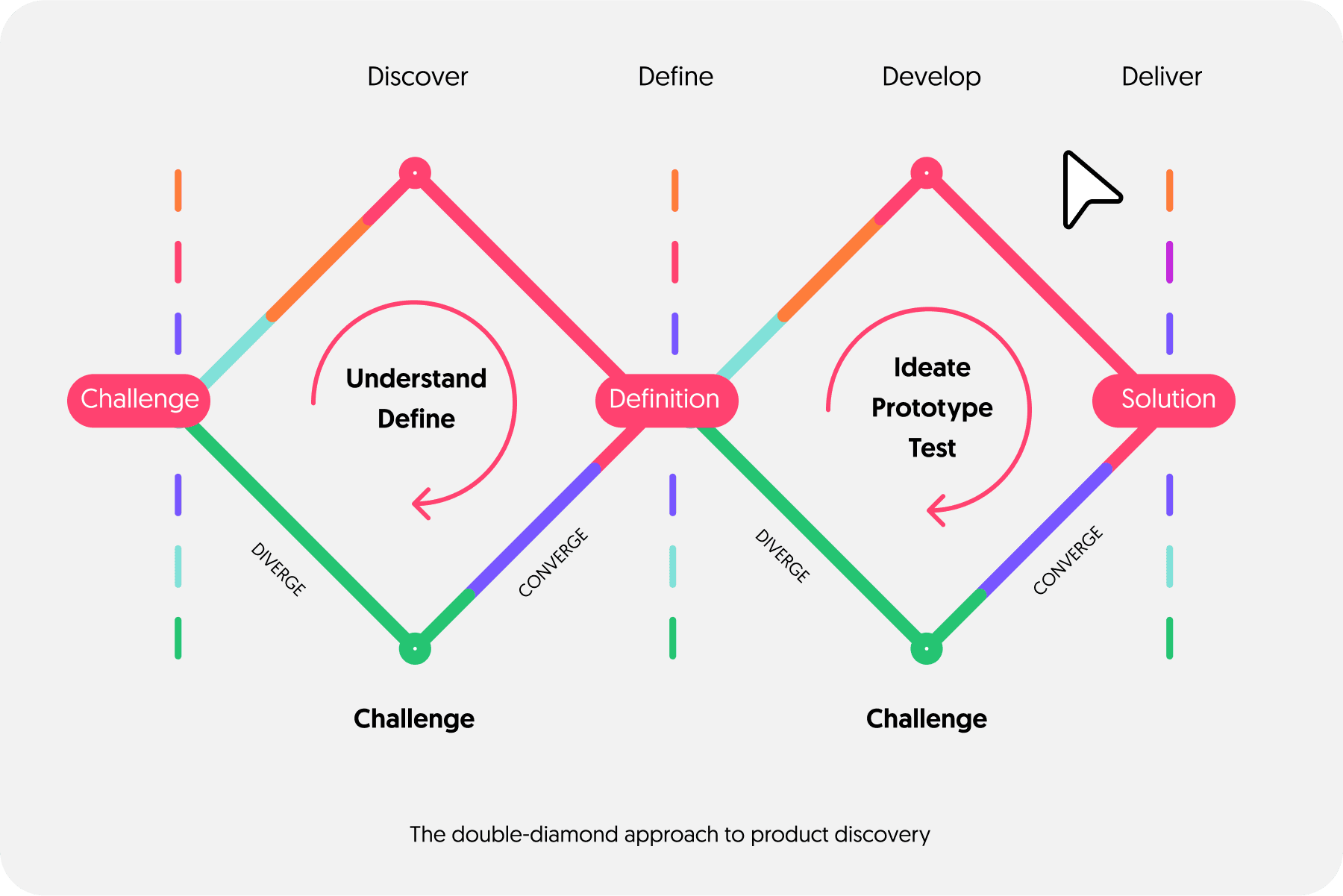
Defining the product vision: before the design process begins, it’s essential to understand why the product exists in the first place. A strong vision sets the direction and guides the team toward a successful outcome. The product strategy helps map the journey by defining the destination—the ultimate user experience—and the steps needed to get there.
Product research: this phase is all about gathering insights. By researching the target audience and market, product teams can make informed decisions. Design product efforts are more likely to succeed when backed by solid data.
User analysis: once research is done, designers analyze the data to draw insights about users' behaviors, needs, and pain points. This often leads to the creation of personas, which represent different user types and help guide design decisions.
Ideation: here’s where creativity flows. The team brainstorms multiple ideas to solve the identified problem. Tools like sketching or storyboarding help visualize interactions and potential solutions.
Design and prototyping: with a clear direction, the team begins to design the solution and create prototypes. These prototypes are tested to ensure they address user needs effectively.
Testing and validation: testing allows designers to see how real users interact with the prototype. It’s a crucial phase to validate that the design works as intended and to spot usability issues early on.
Post-launch activities: as we’ve said, the product design process doesn’t stop at launch. Designers continuously monitor user behavior, gather feedback, and make improvements to ensure the product evolves with its users' needs.
The seven essential elements of product design success
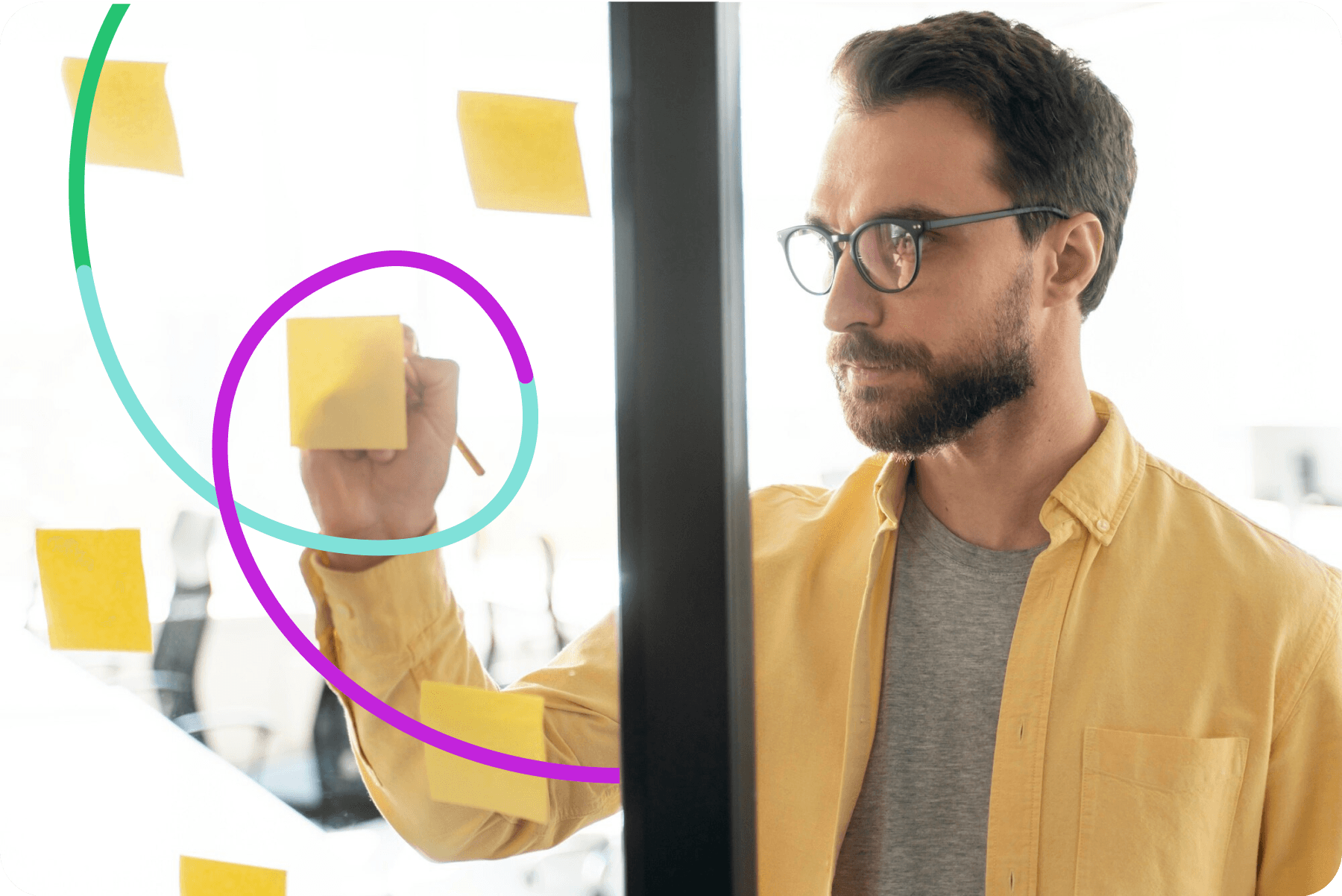
Designing products that truly meet user needs, stand out in the market, and help achieve business goals requires careful attention to several key factors. To ensure success, product designers must consider these seven crucial elements:
Desirability: does the product solve a real problem or fulfill a specific need for the target audience? If the product isn’t something users want, it’s unlikely to succeed, no matter how well it’s designed
Feasibility: even the best ideas need to be doable. Can the product be built with the available technology, materials, and resources? If the answer is no, the design, no matter how exciting, won’t move forward.
Viability: a product needs to make smart business sense. If it isn’t profitable or won’t contribute to the company’s long-term growth, it’s not a viable option.
Functionality: every product must have a clear purpose and perform as users expect. It needs to work seamlessly and help users accomplish their tasks.
Aesthetics: a well-designed product isn’t just functional; it’s visually appealing. The look of a product helps build brand identity, attracts users, and enhances overall user satisfaction.
Quality: high-quality products meet user expectations, are reliable, and perform well over time. Poor quality will quickly damage your brand’s reputation.
User Experience: the UX determines how easy and enjoyable a product is to use. Great User Experience ensures that the product is intuitive, accessible, and delivers on its promises.
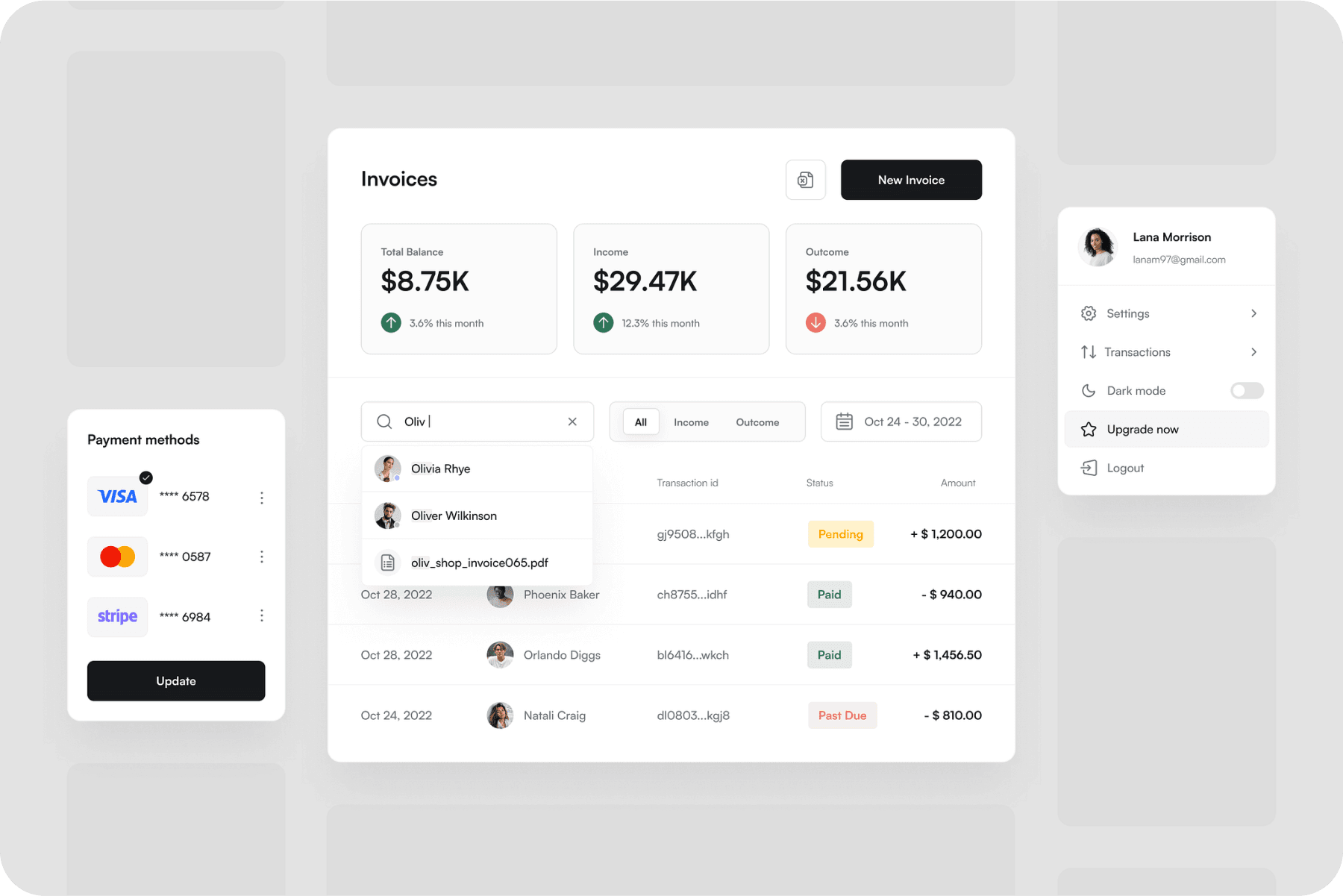
By balancing these seven elements, you’ll fully understand what product design success looks like, helping create products that are not only functional and beautiful but also competitive and aligned with business goals.
What is product design: let’s recap
In essence, what is product design? It’s the art and science of creating products that truly meet the needs of users while aligning with business goals. By understanding the audience, identifying their problems, and crafting thoughtful solutions, product design ensures that every feature delivers value and an exceptional user experience. Remember, design is for people, and the most successful products solve real-world problems in intuitive ways.
At Donux, we’re passionate about helping businesses design digital products that make an impact. Whether you’re starting from scratch or refining an existing product, we’re here to support you every step of the way. Ready to get started? Contact us today and let’s build a product that your users will love!
In today’s fast-paced, competitive world, the success of any digital product is closely tied to one key element: design. It's one of the first thing people notice, and in an age where both physical and digital products are constantly vying for attention, great design is increasingly becoming a crucial differentiating factor for companies. Whether you're talking about a new app, a website, or something you’d find on a retail shelf, design is the ultimate game-changer. But what is product design exactly? Traditionally, the term “product” referred to physical items you’d see in stores. Now, it encompasses digital experiences too. From the app on your phone to the website you browse daily, these are all modern products, and their success depends heavily on design.
At its core, product design is the process of blending user needs with business goals, creating solutions that don’t just look good, but work well for the people who use them. It’s about more than just aesthetics—it’s about making sure the product delivers the right experience for the right people. And that means understanding your audience, researching their problems, and crafting something that solves those issues in a meaningful way.
In this article, we’ll dive into what product design truly involves and why it’s the most important feature of any successful product.
So, what exactly is product design?
The product design definition refers to the process of imagining, creating, and refining products that address real user problems or fulfill specific market needs. It’s not just about making things look good; it’s about ensuring that the product works well, meets user expectations, and delivers a seamless experience.
Fundamentally, the meaning of product design revolves around understanding the end user—who they are, what they need, and how they interact with the product. Product designers focus on solving real-world issues by combining empathy with a deep knowledge of customer behavior, habits, and frustrations. The ultimate aim is to create solutions that feel intuitive, so natural that users don’t even have to think about them.
As we will see in this article, the product design process involves identifying opportunities in the market, clearly defining the problem, crafting a solution, and validating that solution with real users. And it doesn’t stop at launch—good design practices extend throughout the product’s entire lifecycle, ensuring that new features and improvements are integrated smoothly and consistently.
But product design isn’t just what users see. It also includes behind-the-scenes elements like system and process design, which ensure that everything functions smoothly, supporting the overall user experience.
From handcrafted goods to digital products: the evolution of product design
Did you know product design has its roots in something much older—industrial design? Back in the day, before the rise of mass production, craftspeople created products by hand, which meant they were fewer in number and more expensive. But when the industrial era kicked off, companies could mass-produce items at lower costs. That’s when industrial designers came in, making these products not only functional but also stylish enough to attract a growing market of consumers.

Originally, industrial design was all about creating physical products like furniture or appliances. But as technology advanced, a new branch of design emerged: product design. Unlike its industrial counterpart, product design applies to everything, from physical items to digital ones, like the apps on your phone.
So, what’s the difference? While industrial design still focuses on tangible goods, product design has expanded into the digital space, shaping how we experience software, apps, and more. This evolution highlights how design adapts to meet the changing needs of the world—whether it's something you hold in your hand or interact with on a screen!

The never-ending cycle of product design: think, create, test, repeat!
When asking 'what is product design,' it’s important to understand that it’s not a one-and-done process—it’s a dynamic, evolving journey that follows a flexible framework known as design thinking. The steps may vary slightly between companies, but the core philosophy remains the same. It typically begins with empathy and understanding the needs of the users. From there, designers define the problem, brainstorm solutions, build prototypes, and test them with real users.
But don’t be fooled by the neat order of these steps—they’re not always followed in a straight line. Often, testing a prototype reveals new insights, sending the team back to redefine the problem or rethink their solution. In fact, the product design process never truly stops. As user behaviors change—like the shift toward mobile usage—designers must continually adapt, ensuring their products stay relevant and user-friendly.

Before diving into solutions, though, designers need to ask the right questions: what problem are we solving? Who has this problem? What do we want to achieve? By answering these questions, product designers can shape the user experience from a holistic perspective, ensuring the product not only looks good but also solves real problems for real people.

Credits: Dan Brown, “Practical Design Discovery”
How does the product design process work? Understanding what product design truly is about
When it comes to designing products, there’s no one-size-fits-all approach, but most teams follow a general framework to guide the process.
There are a lot of processes out there, IDEO Design Thinking, Double Diamond, Google Design Sprints, but they tipically include a series of steps that starts long before sketching ideas and building prototypes. It typically follows a flow that looks something like this:

Defining the product vision: before the design process begins, it’s essential to understand why the product exists in the first place. A strong vision sets the direction and guides the team toward a successful outcome. The product strategy helps map the journey by defining the destination—the ultimate user experience—and the steps needed to get there.
Product research: this phase is all about gathering insights. By researching the target audience and market, product teams can make informed decisions. Design product efforts are more likely to succeed when backed by solid data.
User analysis: once research is done, designers analyze the data to draw insights about users' behaviors, needs, and pain points. This often leads to the creation of personas, which represent different user types and help guide design decisions.
Ideation: here’s where creativity flows. The team brainstorms multiple ideas to solve the identified problem. Tools like sketching or storyboarding help visualize interactions and potential solutions.
Design and prototyping: with a clear direction, the team begins to design the solution and create prototypes. These prototypes are tested to ensure they address user needs effectively.
Testing and validation: testing allows designers to see how real users interact with the prototype. It’s a crucial phase to validate that the design works as intended and to spot usability issues early on.
Post-launch activities: as we’ve said, the product design process doesn’t stop at launch. Designers continuously monitor user behavior, gather feedback, and make improvements to ensure the product evolves with its users' needs.
The seven essential elements of product design success

Designing products that truly meet user needs, stand out in the market, and help achieve business goals requires careful attention to several key factors. To ensure success, product designers must consider these seven crucial elements:
Desirability: does the product solve a real problem or fulfill a specific need for the target audience? If the product isn’t something users want, it’s unlikely to succeed, no matter how well it’s designed
Feasibility: even the best ideas need to be doable. Can the product be built with the available technology, materials, and resources? If the answer is no, the design, no matter how exciting, won’t move forward.
Viability: a product needs to make smart business sense. If it isn’t profitable or won’t contribute to the company’s long-term growth, it’s not a viable option.
Functionality: every product must have a clear purpose and perform as users expect. It needs to work seamlessly and help users accomplish their tasks.
Aesthetics: a well-designed product isn’t just functional; it’s visually appealing. The look of a product helps build brand identity, attracts users, and enhances overall user satisfaction.
Quality: high-quality products meet user expectations, are reliable, and perform well over time. Poor quality will quickly damage your brand’s reputation.
User Experience: the UX determines how easy and enjoyable a product is to use. Great User Experience ensures that the product is intuitive, accessible, and delivers on its promises.

By balancing these seven elements, you’ll fully understand what product design success looks like, helping create products that are not only functional and beautiful but also competitive and aligned with business goals.
What is product design: let’s recap
In essence, what is product design? It’s the art and science of creating products that truly meet the needs of users while aligning with business goals. By understanding the audience, identifying their problems, and crafting thoughtful solutions, product design ensures that every feature delivers value and an exceptional user experience. Remember, design is for people, and the most successful products solve real-world problems in intuitive ways.
At Donux, we’re passionate about helping businesses design digital products that make an impact. Whether you’re starting from scratch or refining an existing product, we’re here to support you every step of the way. Ready to get started? Contact us today and let’s build a product that your users will love!
In today’s fast-paced, competitive world, the success of any digital product is closely tied to one key element: design. It's one of the first thing people notice, and in an age where both physical and digital products are constantly vying for attention, great design is increasingly becoming a crucial differentiating factor for companies. Whether you're talking about a new app, a website, or something you’d find on a retail shelf, design is the ultimate game-changer. But what is product design exactly? Traditionally, the term “product” referred to physical items you’d see in stores. Now, it encompasses digital experiences too. From the app on your phone to the website you browse daily, these are all modern products, and their success depends heavily on design.
At its core, product design is the process of blending user needs with business goals, creating solutions that don’t just look good, but work well for the people who use them. It’s about more than just aesthetics—it’s about making sure the product delivers the right experience for the right people. And that means understanding your audience, researching their problems, and crafting something that solves those issues in a meaningful way.
In this article, we’ll dive into what product design truly involves and why it’s the most important feature of any successful product.
So, what exactly is product design?
The product design definition refers to the process of imagining, creating, and refining products that address real user problems or fulfill specific market needs. It’s not just about making things look good; it’s about ensuring that the product works well, meets user expectations, and delivers a seamless experience.
Fundamentally, the meaning of product design revolves around understanding the end user—who they are, what they need, and how they interact with the product. Product designers focus on solving real-world issues by combining empathy with a deep knowledge of customer behavior, habits, and frustrations. The ultimate aim is to create solutions that feel intuitive, so natural that users don’t even have to think about them.
As we will see in this article, the product design process involves identifying opportunities in the market, clearly defining the problem, crafting a solution, and validating that solution with real users. And it doesn’t stop at launch—good design practices extend throughout the product’s entire lifecycle, ensuring that new features and improvements are integrated smoothly and consistently.
But product design isn’t just what users see. It also includes behind-the-scenes elements like system and process design, which ensure that everything functions smoothly, supporting the overall user experience.
From handcrafted goods to digital products: the evolution of product design
Did you know product design has its roots in something much older—industrial design? Back in the day, before the rise of mass production, craftspeople created products by hand, which meant they were fewer in number and more expensive. But when the industrial era kicked off, companies could mass-produce items at lower costs. That’s when industrial designers came in, making these products not only functional but also stylish enough to attract a growing market of consumers.

Originally, industrial design was all about creating physical products like furniture or appliances. But as technology advanced, a new branch of design emerged: product design. Unlike its industrial counterpart, product design applies to everything, from physical items to digital ones, like the apps on your phone.
So, what’s the difference? While industrial design still focuses on tangible goods, product design has expanded into the digital space, shaping how we experience software, apps, and more. This evolution highlights how design adapts to meet the changing needs of the world—whether it's something you hold in your hand or interact with on a screen!

The never-ending cycle of product design: think, create, test, repeat!
When asking 'what is product design,' it’s important to understand that it’s not a one-and-done process—it’s a dynamic, evolving journey that follows a flexible framework known as design thinking. The steps may vary slightly between companies, but the core philosophy remains the same. It typically begins with empathy and understanding the needs of the users. From there, designers define the problem, brainstorm solutions, build prototypes, and test them with real users.
But don’t be fooled by the neat order of these steps—they’re not always followed in a straight line. Often, testing a prototype reveals new insights, sending the team back to redefine the problem or rethink their solution. In fact, the product design process never truly stops. As user behaviors change—like the shift toward mobile usage—designers must continually adapt, ensuring their products stay relevant and user-friendly.

Before diving into solutions, though, designers need to ask the right questions: what problem are we solving? Who has this problem? What do we want to achieve? By answering these questions, product designers can shape the user experience from a holistic perspective, ensuring the product not only looks good but also solves real problems for real people.

Credits: Dan Brown, “Practical Design Discovery”
How does the product design process work? Understanding what product design truly is about
When it comes to designing products, there’s no one-size-fits-all approach, but most teams follow a general framework to guide the process.
There are a lot of processes out there, IDEO Design Thinking, Double Diamond, Google Design Sprints, but they tipically include a series of steps that starts long before sketching ideas and building prototypes. It typically follows a flow that looks something like this:

Defining the product vision: before the design process begins, it’s essential to understand why the product exists in the first place. A strong vision sets the direction and guides the team toward a successful outcome. The product strategy helps map the journey by defining the destination—the ultimate user experience—and the steps needed to get there.
Product research: this phase is all about gathering insights. By researching the target audience and market, product teams can make informed decisions. Design product efforts are more likely to succeed when backed by solid data.
User analysis: once research is done, designers analyze the data to draw insights about users' behaviors, needs, and pain points. This often leads to the creation of personas, which represent different user types and help guide design decisions.
Ideation: here’s where creativity flows. The team brainstorms multiple ideas to solve the identified problem. Tools like sketching or storyboarding help visualize interactions and potential solutions.
Design and prototyping: with a clear direction, the team begins to design the solution and create prototypes. These prototypes are tested to ensure they address user needs effectively.
Testing and validation: testing allows designers to see how real users interact with the prototype. It’s a crucial phase to validate that the design works as intended and to spot usability issues early on.
Post-launch activities: as we’ve said, the product design process doesn’t stop at launch. Designers continuously monitor user behavior, gather feedback, and make improvements to ensure the product evolves with its users' needs.
The seven essential elements of product design success

Designing products that truly meet user needs, stand out in the market, and help achieve business goals requires careful attention to several key factors. To ensure success, product designers must consider these seven crucial elements:
Desirability: does the product solve a real problem or fulfill a specific need for the target audience? If the product isn’t something users want, it’s unlikely to succeed, no matter how well it’s designed
Feasibility: even the best ideas need to be doable. Can the product be built with the available technology, materials, and resources? If the answer is no, the design, no matter how exciting, won’t move forward.
Viability: a product needs to make smart business sense. If it isn’t profitable or won’t contribute to the company’s long-term growth, it’s not a viable option.
Functionality: every product must have a clear purpose and perform as users expect. It needs to work seamlessly and help users accomplish their tasks.
Aesthetics: a well-designed product isn’t just functional; it’s visually appealing. The look of a product helps build brand identity, attracts users, and enhances overall user satisfaction.
Quality: high-quality products meet user expectations, are reliable, and perform well over time. Poor quality will quickly damage your brand’s reputation.
User Experience: the UX determines how easy and enjoyable a product is to use. Great User Experience ensures that the product is intuitive, accessible, and delivers on its promises.

By balancing these seven elements, you’ll fully understand what product design success looks like, helping create products that are not only functional and beautiful but also competitive and aligned with business goals.
What is product design: let’s recap
In essence, what is product design? It’s the art and science of creating products that truly meet the needs of users while aligning with business goals. By understanding the audience, identifying their problems, and crafting thoughtful solutions, product design ensures that every feature delivers value and an exceptional user experience. Remember, design is for people, and the most successful products solve real-world problems in intuitive ways.
At Donux, we’re passionate about helping businesses design digital products that make an impact. Whether you’re starting from scratch or refining an existing product, we’re here to support you every step of the way. Ready to get started? Contact us today and let’s build a product that your users will love!
In today’s fast-paced, competitive world, the success of any digital product is closely tied to one key element: design. It's one of the first thing people notice, and in an age where both physical and digital products are constantly vying for attention, great design is increasingly becoming a crucial differentiating factor for companies. Whether you're talking about a new app, a website, or something you’d find on a retail shelf, design is the ultimate game-changer. But what is product design exactly? Traditionally, the term “product” referred to physical items you’d see in stores. Now, it encompasses digital experiences too. From the app on your phone to the website you browse daily, these are all modern products, and their success depends heavily on design.
At its core, product design is the process of blending user needs with business goals, creating solutions that don’t just look good, but work well for the people who use them. It’s about more than just aesthetics—it’s about making sure the product delivers the right experience for the right people. And that means understanding your audience, researching their problems, and crafting something that solves those issues in a meaningful way.
In this article, we’ll dive into what product design truly involves and why it’s the most important feature of any successful product.
So, what exactly is product design?
The product design definition refers to the process of imagining, creating, and refining products that address real user problems or fulfill specific market needs. It’s not just about making things look good; it’s about ensuring that the product works well, meets user expectations, and delivers a seamless experience.
Fundamentally, the meaning of product design revolves around understanding the end user—who they are, what they need, and how they interact with the product. Product designers focus on solving real-world issues by combining empathy with a deep knowledge of customer behavior, habits, and frustrations. The ultimate aim is to create solutions that feel intuitive, so natural that users don’t even have to think about them.
As we will see in this article, the product design process involves identifying opportunities in the market, clearly defining the problem, crafting a solution, and validating that solution with real users. And it doesn’t stop at launch—good design practices extend throughout the product’s entire lifecycle, ensuring that new features and improvements are integrated smoothly and consistently.
But product design isn’t just what users see. It also includes behind-the-scenes elements like system and process design, which ensure that everything functions smoothly, supporting the overall user experience.
From handcrafted goods to digital products: the evolution of product design
Did you know product design has its roots in something much older—industrial design? Back in the day, before the rise of mass production, craftspeople created products by hand, which meant they were fewer in number and more expensive. But when the industrial era kicked off, companies could mass-produce items at lower costs. That’s when industrial designers came in, making these products not only functional but also stylish enough to attract a growing market of consumers.

Originally, industrial design was all about creating physical products like furniture or appliances. But as technology advanced, a new branch of design emerged: product design. Unlike its industrial counterpart, product design applies to everything, from physical items to digital ones, like the apps on your phone.
So, what’s the difference? While industrial design still focuses on tangible goods, product design has expanded into the digital space, shaping how we experience software, apps, and more. This evolution highlights how design adapts to meet the changing needs of the world—whether it's something you hold in your hand or interact with on a screen!

The never-ending cycle of product design: think, create, test, repeat!
When asking 'what is product design,' it’s important to understand that it’s not a one-and-done process—it’s a dynamic, evolving journey that follows a flexible framework known as design thinking. The steps may vary slightly between companies, but the core philosophy remains the same. It typically begins with empathy and understanding the needs of the users. From there, designers define the problem, brainstorm solutions, build prototypes, and test them with real users.
But don’t be fooled by the neat order of these steps—they’re not always followed in a straight line. Often, testing a prototype reveals new insights, sending the team back to redefine the problem or rethink their solution. In fact, the product design process never truly stops. As user behaviors change—like the shift toward mobile usage—designers must continually adapt, ensuring their products stay relevant and user-friendly.

Before diving into solutions, though, designers need to ask the right questions: what problem are we solving? Who has this problem? What do we want to achieve? By answering these questions, product designers can shape the user experience from a holistic perspective, ensuring the product not only looks good but also solves real problems for real people.

Credits: Dan Brown, “Practical Design Discovery”
How does the product design process work? Understanding what product design truly is about
When it comes to designing products, there’s no one-size-fits-all approach, but most teams follow a general framework to guide the process.
There are a lot of processes out there, IDEO Design Thinking, Double Diamond, Google Design Sprints, but they tipically include a series of steps that starts long before sketching ideas and building prototypes. It typically follows a flow that looks something like this:

Defining the product vision: before the design process begins, it’s essential to understand why the product exists in the first place. A strong vision sets the direction and guides the team toward a successful outcome. The product strategy helps map the journey by defining the destination—the ultimate user experience—and the steps needed to get there.
Product research: this phase is all about gathering insights. By researching the target audience and market, product teams can make informed decisions. Design product efforts are more likely to succeed when backed by solid data.
User analysis: once research is done, designers analyze the data to draw insights about users' behaviors, needs, and pain points. This often leads to the creation of personas, which represent different user types and help guide design decisions.
Ideation: here’s where creativity flows. The team brainstorms multiple ideas to solve the identified problem. Tools like sketching or storyboarding help visualize interactions and potential solutions.
Design and prototyping: with a clear direction, the team begins to design the solution and create prototypes. These prototypes are tested to ensure they address user needs effectively.
Testing and validation: testing allows designers to see how real users interact with the prototype. It’s a crucial phase to validate that the design works as intended and to spot usability issues early on.
Post-launch activities: as we’ve said, the product design process doesn’t stop at launch. Designers continuously monitor user behavior, gather feedback, and make improvements to ensure the product evolves with its users' needs.
The seven essential elements of product design success

Designing products that truly meet user needs, stand out in the market, and help achieve business goals requires careful attention to several key factors. To ensure success, product designers must consider these seven crucial elements:
Desirability: does the product solve a real problem or fulfill a specific need for the target audience? If the product isn’t something users want, it’s unlikely to succeed, no matter how well it’s designed
Feasibility: even the best ideas need to be doable. Can the product be built with the available technology, materials, and resources? If the answer is no, the design, no matter how exciting, won’t move forward.
Viability: a product needs to make smart business sense. If it isn’t profitable or won’t contribute to the company’s long-term growth, it’s not a viable option.
Functionality: every product must have a clear purpose and perform as users expect. It needs to work seamlessly and help users accomplish their tasks.
Aesthetics: a well-designed product isn’t just functional; it’s visually appealing. The look of a product helps build brand identity, attracts users, and enhances overall user satisfaction.
Quality: high-quality products meet user expectations, are reliable, and perform well over time. Poor quality will quickly damage your brand’s reputation.
User Experience: the UX determines how easy and enjoyable a product is to use. Great User Experience ensures that the product is intuitive, accessible, and delivers on its promises.

By balancing these seven elements, you’ll fully understand what product design success looks like, helping create products that are not only functional and beautiful but also competitive and aligned with business goals.
What is product design: let’s recap
In essence, what is product design? It’s the art and science of creating products that truly meet the needs of users while aligning with business goals. By understanding the audience, identifying their problems, and crafting thoughtful solutions, product design ensures that every feature delivers value and an exceptional user experience. Remember, design is for people, and the most successful products solve real-world problems in intuitive ways.
At Donux, we’re passionate about helping businesses design digital products that make an impact. Whether you’re starting from scratch or refining an existing product, we’re here to support you every step of the way. Ready to get started? Contact us today and let’s build a product that your users will love!
Subscribe to our product design newsletter
We'll be sending two emails every month with product and design tips for B2B SaaS
Products
About
Products
About
Products
About